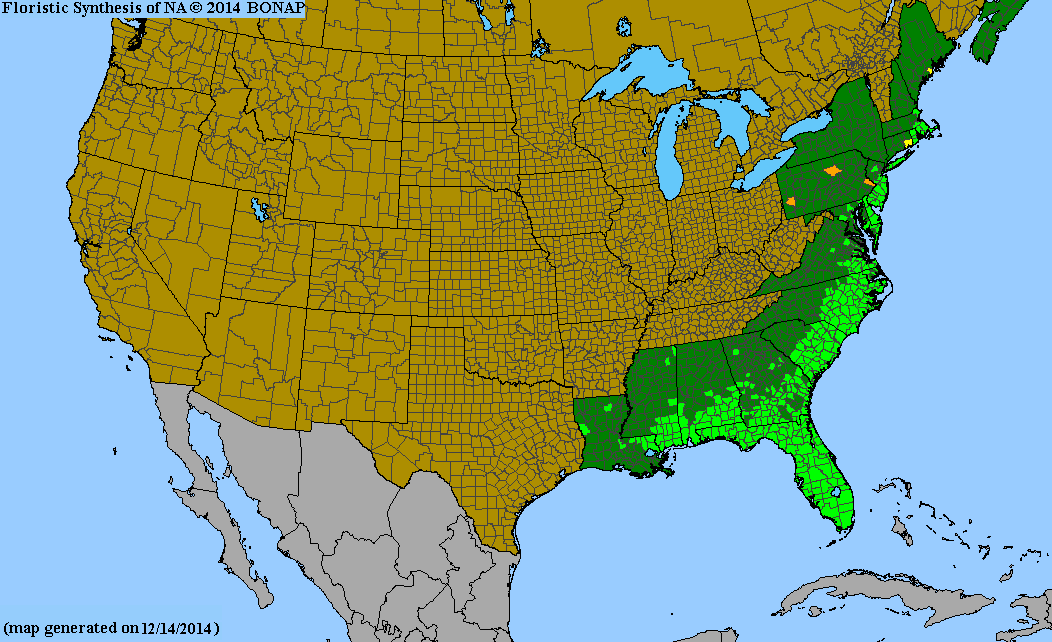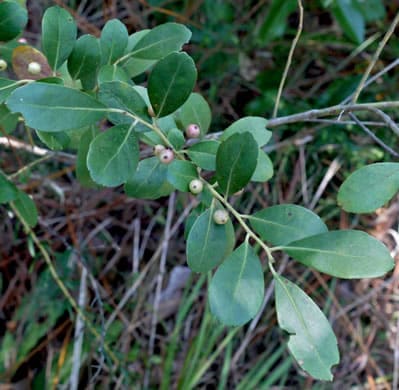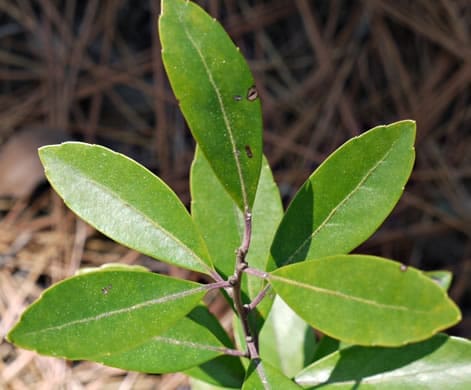Aquifoliaceae
inkberry
Ilex glabra
Synonyms
Prinos glaber
Winterlia glabra
Other Common Names
gallberry
Plant Type
Shrub (less than 10 ft)
Life Cycle
Perennial
Typical Size
5-10 ft. tall
5-8 ft. wide
Tolerant of
Occasional Flooding
Propagation
By seed, By cutting
Plant Propagation Notes
Seeds take a long time to germinate, but the process may benefit from a 30-60 day warm treatment followed by 60-90 day cold, moist stratification.
Plant Planting Notes
Provide 5-8 feet spacing.
Plants/Diseases
Occasionally, leaf is pot can be a problem. Spider mites may colonize plants, especially in dryer conditions. High pH (alkaline) soils can close chlorosis.
Wildlife Benefits
Nectar/pollen source for pollinating insects, Host plant for butterfly larvae, Fruit/seeds for birds
Leaves
The simple, alternate leaves are elliptic to obovate, leathery with entire margins. Approximately 1.5 inches long.
Flowers
Cymes of small, fragrant flowers. Inkberries are dioecious, and need both male and female plants to produce fruit.
Fruit
Small, 3/8″ diameter black drupes.
Toxicity
Low toxicity. If ingested, may cause vomiting and diarrhea.

USDA Hardiness Zones
4, 5, 6, 7, 8, 9, 10
Light Exposure
Full Sun, Part Sun/Shade
Soil Moisture
Moist
Soil Drainage
Well-drained
Soil pH
Acidic (less than 6.0)
Native in South Carolina?
Yes
Plant Native Habitat
Savannas, pine flatwoods, pocosin margins, swamps, primarily in wetlands, but extending upslope even into sandhills, with a clay lens or spodic horizon below to maintain additional moisture.
Global Conservation Status (NatureServe)
Secure (G5)
Federal Conservation Status (USFWS)
Not Listed
Distribution Notes
Common in the SC Coastal Plain and absent from the Piedmont and Mountains


